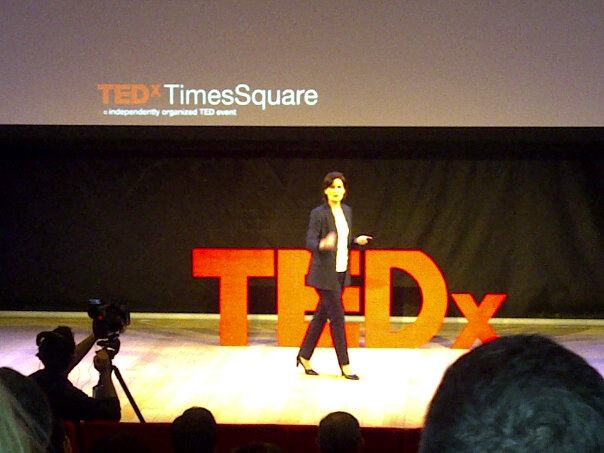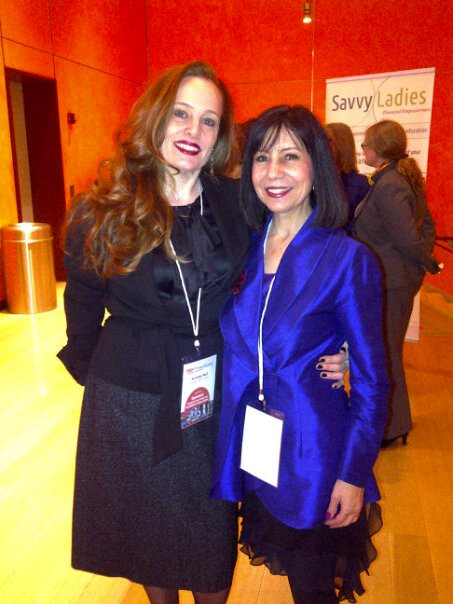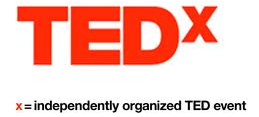Group Think can kill creativity. It can be a catalyst for mistakes because ideas aren’t thought through or challenged. Team members may feel shut down or ostracized if they disagree, leading to distrust and resentment. Here’s how to stop it.
TEDx Comes to Times Square
 Yesterday, I attended TEDxTimesSquare, which is an independently organized TED event in New York City. The theme was Openness: Exploring the Limits and Possibilities of Open Culture. TED stands for Technology, Education, and Design, and is a forum for public speakers to share ideas worth spreading.
Yesterday, I attended TEDxTimesSquare, which is an independently organized TED event in New York City. The theme was Openness: Exploring the Limits and Possibilities of Open Culture. TED stands for Technology, Education, and Design, and is a forum for public speakers to share ideas worth spreading.
It's a wonderful platform for professional speakers to gain exposure and for the audience to experience a wide range of speaking styles and fascinating topics.
One of the best presenters was Karol Ward whose presentation was called, "Claim Your Inner Voice". She was the epitome of professional speaking. From the message, to the timing, to her movement, to her story, to her slides - they all worked together to create one seamless message about the mind-body connection.
Another fabulous presenter was Mark Taylor who spoke about "The Enemy of Openness". He shared that the secret to conflict management is triads. With two people, one is right and the other is wrong. With three people, it's easier to accept feedback. Now I know why my mastermind group of three people works so well.
Amy Goldsmith's talk was titled, "Yours, Mine and Ours? Legal Limits of Openness." She shared some fascinating information about intellectual property. We think of intellectual property as literary or musical. But did you know that you don't own your own blood? Once someone draws your blood, it's considered waste material and a researcher can obtain a patent for use of your DNA or cells.

It's not enough to have good presenters. For an event to be successful, it has to be well-organized. TEDxTimesSquare ran smoothly due in large part to event planner Annette Naif.
Other people in the program included:
- Jim Estill - From Zero to $2 Billion Through Openness
- Tim Piper - Why Goodness is Good for Brands
- Christopher Bishop - Open Technology for 430,000 Employees
- Kitty Pilgrim - International Openness
- Guy Geier - Open Architecture
- Collin McCloughlin - Chasing Dreams
- Andy Cohen - Magical Assumptions Behind Openness
- Greg Harper - The Future Through Open Technologies
- Aliza Licht - The Power of Being Real
- Peter Shankman - Nice Finishes First
Words Will Die. 2013 Communication Trends
 Words are dying.
Words are dying.
According to 2013 communication trends research by Davis & Company, words will die. What does that mean for speakers and their presentations? And what will replace words?
Obviously, we won't stop speaking. But visuals will rule. And I don't mean PowerPoint. Pinterest is the fastest growing social media platform.It's usage has increased 1000%.
Engagement on facebook increases 100% when posts are visual. Photos, videos, and infographics have more impact and are quickly making written text outdated.
When coaching transitioning executives on their elevator pitch, I often go to the white board to draw visuals. Instead of scripting words, I use graphic facilitation to create visual cues (graphics, symbols) to build a storyline and help them remember their core messages.
The transformation is amazing! Suddenly, their presentation flows as they stop struggling to remember the written words. Their presentations become conversational as the visuals serve as concept cues. The job applicant or presenter sounds natural instead of scripted. Graphic facilitation is also effective in leading groups toward a common goal and is becoming more popular for strategy sessions. The facilitator organizes information spatially and visually.
Presenters who use graphic facilitation will increase audience engagement, big-picture thinking, and group memory.
Change the way you communicate or get left behind. Improve your presentation, remember more, and stop reading your notes. Leave a message in the comment box to learn how to use graphic communication to be a better presenter and to engage your audience.
TEDx Silicon Alley Tells Public Speakers to Keep it Simple
 TED.com stands for technology, education, and design. Some of the top and most innovative public speakers can be seen on youtube giving an 18 minute presentation on new and creative topics. It's very competitive to get a speaking slot at a TED.com event, so many presenters are opting to organize and speak at local events called TEDx. I recently attended the TEDx Silicon Alley event in New York City. The theme was "Rise of the Machines," but what stood out to me was the connection between technology and human presentation.
One of the presenters, Ken Segall, represented the agency that worked with Apple. He was the man credited for naming the iphone and ipad. He spoke about Steve Jobs and his focus on the simplicity principle. The presenter showed an effective ad for McDonalds coffee. It stated: Any size for only $1.00. It was elegant in it's simplicity. Da Vinci said, "Simplicity is the Ultimate Sophistication."
TED.com stands for technology, education, and design. Some of the top and most innovative public speakers can be seen on youtube giving an 18 minute presentation on new and creative topics. It's very competitive to get a speaking slot at a TED.com event, so many presenters are opting to organize and speak at local events called TEDx. I recently attended the TEDx Silicon Alley event in New York City. The theme was "Rise of the Machines," but what stood out to me was the connection between technology and human presentation.
One of the presenters, Ken Segall, represented the agency that worked with Apple. He was the man credited for naming the iphone and ipad. He spoke about Steve Jobs and his focus on the simplicity principle. The presenter showed an effective ad for McDonalds coffee. It stated: Any size for only $1.00. It was elegant in it's simplicity. Da Vinci said, "Simplicity is the Ultimate Sophistication."
I continue to focus on the K.I.S.S. principle when I speak to audiences. Whether you say Keep it simple stupid, or Keep it super simple, it's not easy to do. When I coach public speakers I tell them to create a short and long version of their presentation. They discover that's it's easier to create a longer presentation. As Ken explained, "Simple can be harder than complex".
My clients realize they have to work harder to get the message clear enough to be simple. They quickly learn that I act as "the lowest common denominator". These presenters must be able to speak so that I understand the message without being an expert in their industry. One presenter told me that when he worked in a law firm they would give a memo or letter to the assistant to read. If she didn't understand it, they rewrote the letter until it was clear.
The more complex the idea, the crisper the message needs to be. This is especially critical when speaking to the media. Professional speakers have a harder time with media training. Motivational speakers are master storytellers so they must make a shift in their presentation. I show them how to speak in sound bites. The average sound bite is about 10 seconds. If it's not short and simple, it won't land and the audience will check out.
Many of the TEDx Silicon Alley speakers focused on technology, from text to speech to algorithms to flying robots. Whether it's face-to-face or virtual, we can't get away from the need for good presentation. How do you tie these two worlds together? The thread that runs through both is simplicity. Steve Jobs said it best when he said about simplicity: "it's worth it in the end because you can move mountains."
